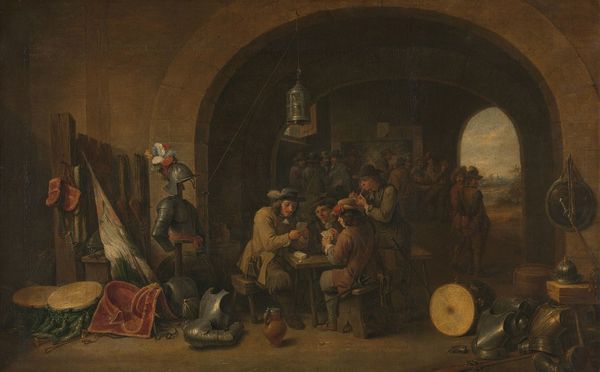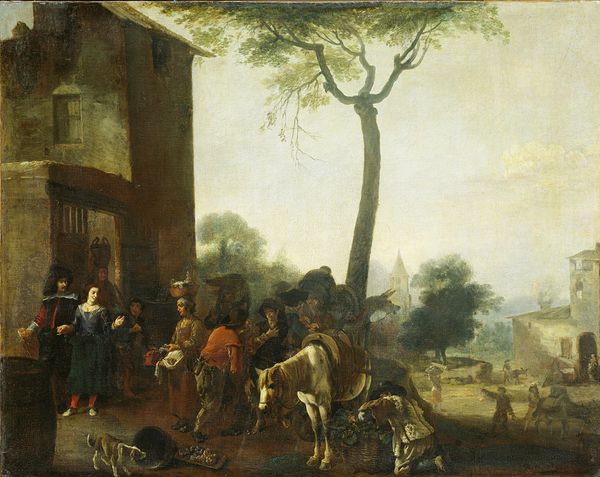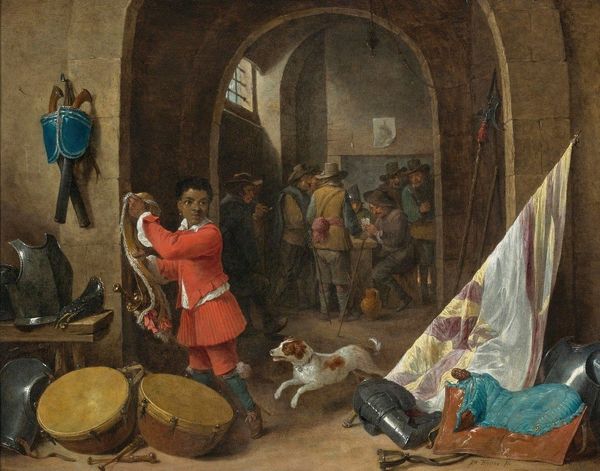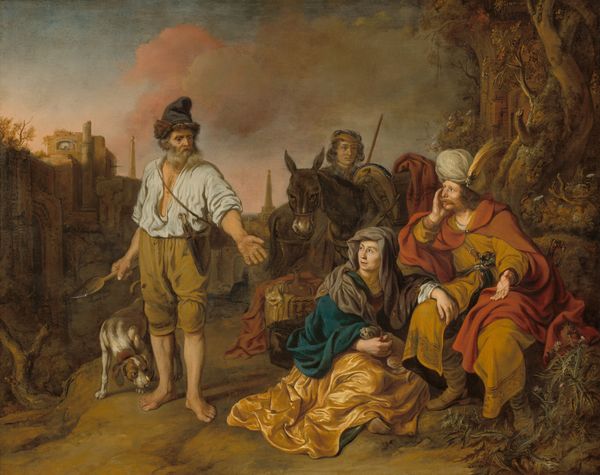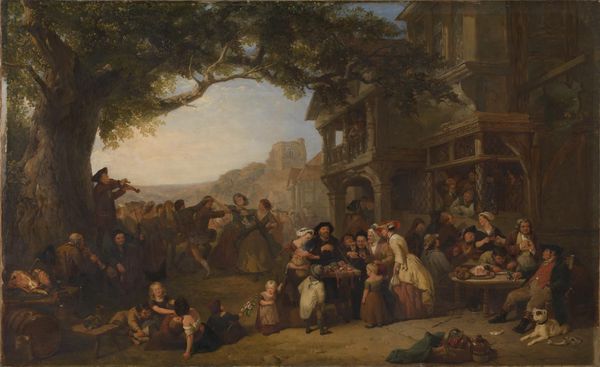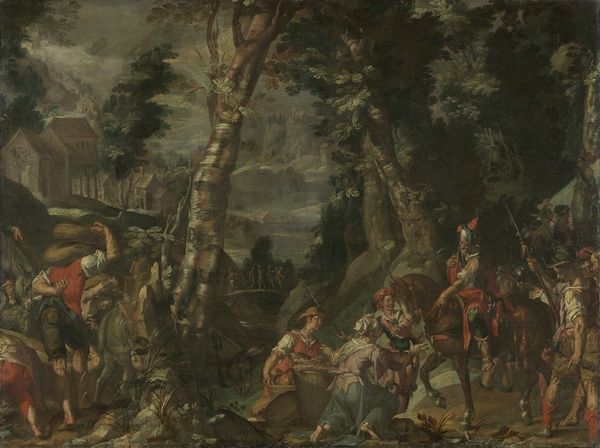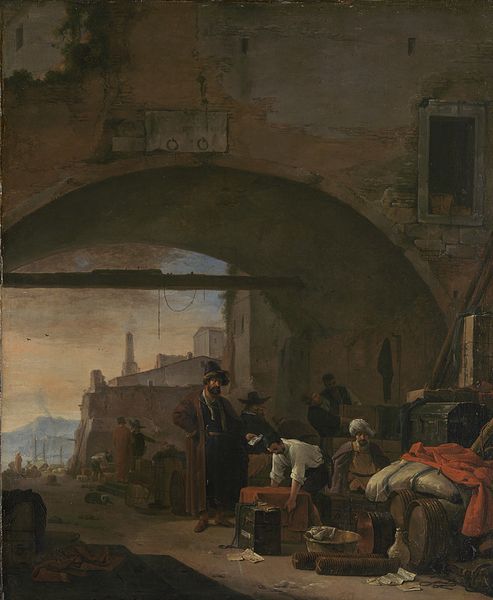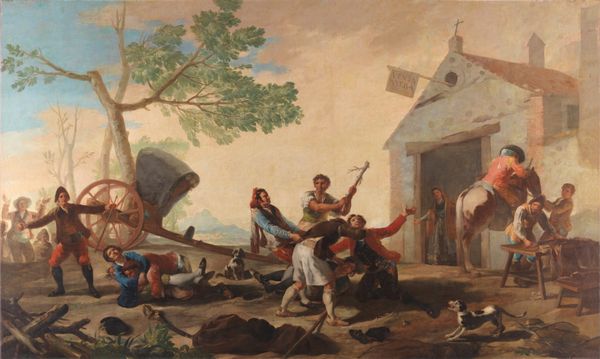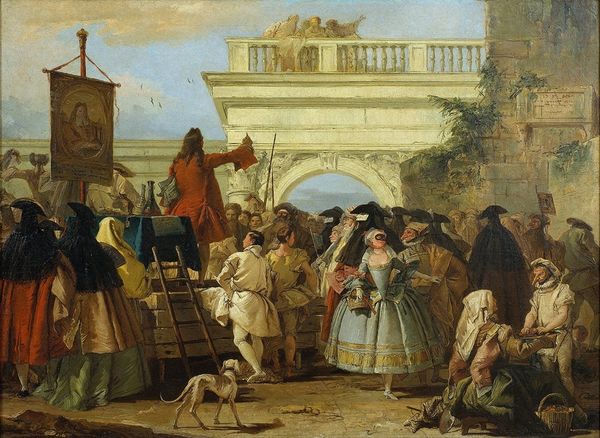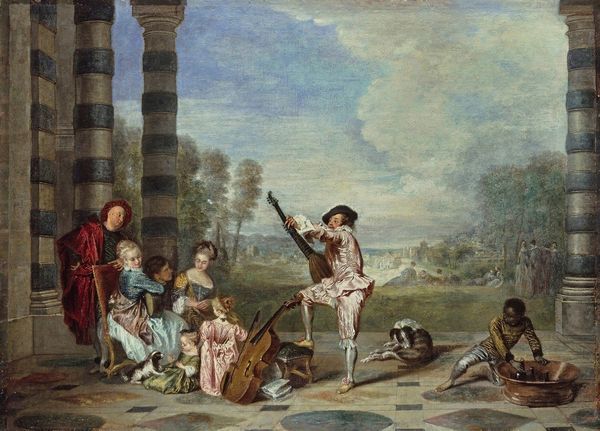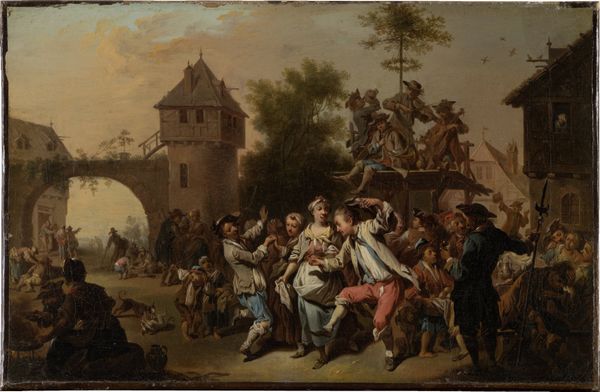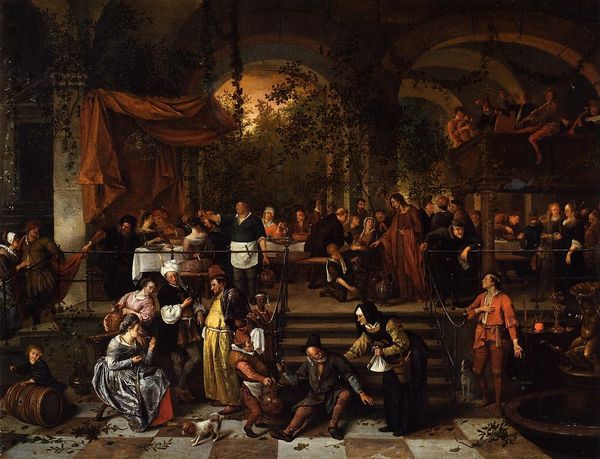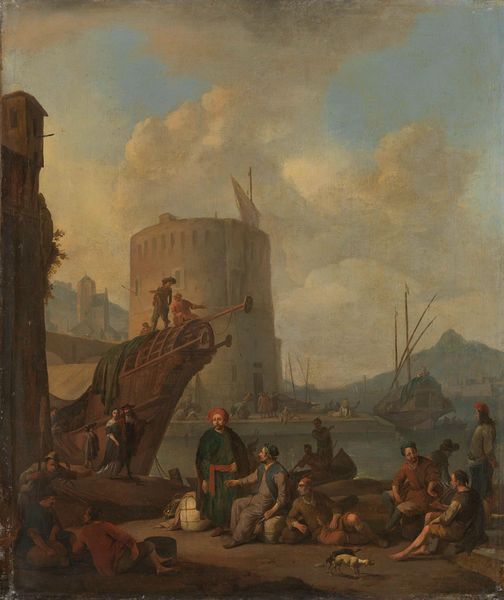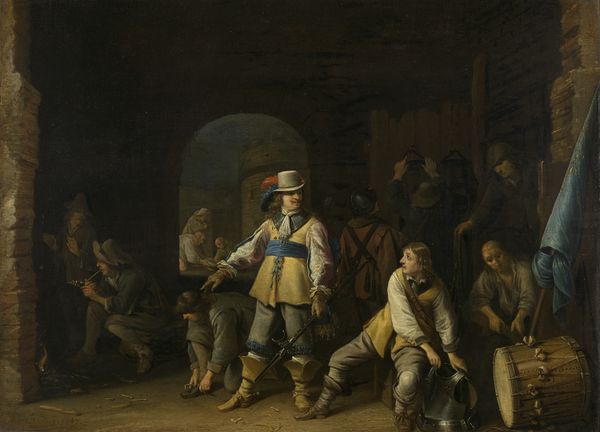
oil-paint
#
portrait
#
baroque
#
oil-paint
#
landscape
#
oil painting
#
soldier
#
genre-painting
#
realism
Dimensions: 69 x 103 cm
Copyright: Public domain
Editor: Here we have "Guardroom," an oil painting created in 1642 by David Teniers the Younger, currently residing in the Hermitage Museum. The first thing that strikes me is the contrast between the soldiers relaxing inside and the implied military activity outside. What story do you think this work is trying to tell? Curator: It’s interesting that you pick up on that tension. Consider the Eighty Years’ War that defined much of 17th-century life in the Low Countries, where Teniers worked. This seemingly casual genre scene is deeply rooted in a society saturated with conflict. What does it tell us about the function of these ‘guardrooms’ that soldiers might be gambling, sleeping, even performing surgery in such a space? Editor: So, it’s not just a literal depiction of a guardroom, but also a commentary on the realities of war? A subtle critique, maybe? Curator: Precisely. Note how Teniers isn’t glorifying military might; instead, he offers a glimpse into the quotidian existence shaped by it. Think about the intended audience and where paintings like this might have been displayed. Could this offer a palatable, digestible view of otherwise troubling affairs? Editor: That makes me rethink the dog standing at the entrance. Is it waiting patiently, a loyal symbol of a distracted military? Curator: The dog could represent fidelity, loyalty, or perhaps a domesticated sense of order in a chaotic situation. These objects placed in familiar arrangements can reveal otherwise complex emotional perspectives towards institutions. Editor: This makes me see "Guardroom" in a new light; beyond a simple scene, it shows how conflict permeated even the most intimate spaces of daily life. Curator: Indeed, considering the socio-political backdrop allows us to appreciate how Teniers engages with the politics of imagery. The guardroom then, serves as a public, accessible stage for revealing cultural values.
Comments
No comments
Be the first to comment and join the conversation on the ultimate creative platform.
